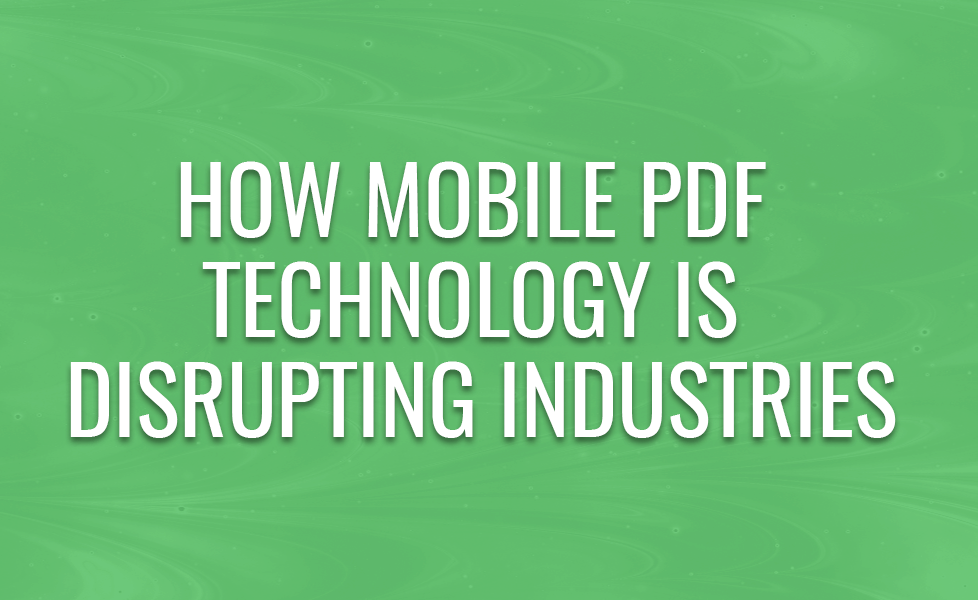How Mobile PDF Technology is Disrupting Industries

More and more companies are becoming mobile first or mobile only organizations. With staggering figures showing that extraordinary numbers of people are accessing the internet through a mobile device as opposed to a desktop computer it has never been more important to evaluate your products to make sure that they are optimised for the right platforms. This goes for applications too. Here at Foxit we are noticing that more industries than ever before are looking to us to provide software that can move their applications into the future through mobile-first PDF technology.
Here are two of the most future-focused industries to learn from:
Engineering and Construction
Engineers and other construction staff spend most of their time on building sites. Blueprints, in the past, were printed out and brought onsite to add notes, before being brought back to the office, scanned and added to a folder on a computer for further collaboration. Slowly it is becoming clear that these need to be developed digitally and with PDFs blueprints can be converted and viewable on any digital device. Due to the fact that engineers have limited space to use laptops, mobile-first is the best way to utilise PDF technology on construction sites. With a small device, construction staff can evaluate a building site, filling out the PDF blueprints as they go.
While checking sites for issues, staff need to be able to circle problem areas, highlight remedies and add notes for further research on their blueprints. These important features are available with PDF technology and we are noticing more that construction companies are looking to us to find out other capabilities within PDF technology to keep that momentum going. Onsite staff can add text, highlight areas, include rough drawings and more, save the document or upload it to the cloud, and then have other members of the team view it remotely. This allows teams to execute decisions quickly, making collaboration and project management easier.
Banking
Banks have always been synonymous with long queues for many of their different services. Corporate customers cannot easily visit a bank to sign contracts due to increased travel needed in business, and domestic customers needing to lodge and also convert money into a different currency cannot easily do so with the same teller. These services are integral to a bank’s success but need to become future proofed in order for customers to keep coming back. In reality, these services can easily be brought online and away from overworked tellers, with the use of PDF technology.
Providing statements and contracts on paper is becoming a thing of the past. Equipping kiosks with tablets that can be used to sign for transactions can free up tellers. Why not email a contract or upload it onto an online portal or app to be digitally signed? With the use of secure digital signatures and security features within PDF technology, banks can move more services online, eliminating the need for domestic and commercial customers to visit a bank for their minor banking needs, and making it easier to sign documents on-the-go using mobile and tablet devices.
Conclusion
PDF technology is fast outgrowing many other technologies. We need to start creating PDFs smartly and understand the full potential of the technology available to us. Paperless offices have freed up cost, automation has freed up time and collaboration has freed up teams. With PDF technology, companies can start planning for a successful future for all their departments.
Our MobilePDF SDK can set your app on the path to success, with demos and sample code provided to help developers who are not as knowledgeable about mobile PDF technology.